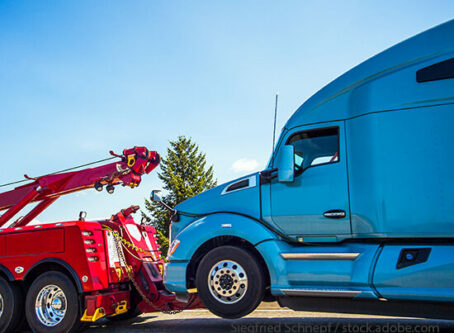OOIDA backs bill clarifying ‘automobile transporters’ definition
The Owner-Operator Independent Drivers Association’s efforts to reform the federal definition of a conventional automobile transporter to remove unnecessary restrictions has gained legislative support in the form of a bill.
OOIDA is joined by the American Trucking Associations in support of the new bill. On Wednesday, June 26, OOIDA and ATA sent a letter to Rep. Blaine Luetkemeyer, R-Mo., to voice their support for HR 3474. The bill clarifies the definition of “automobile transporter” to include truck combinations. Luetkemeyer introduced the bill on the same day.
“Across the federal bureaucracy, unnecessary regulatory guidance creates vast uncertainty in what should be simple regulations,” Luetkemeyer said in a statement. “A perfect example is the confusion surrounding the Federal Highway Administration’s definition of an ‘auto-transporter,’ deeming virtually indistinguishable differences between auto transporters acceptable or unacceptable according to federal regulators.”
According to the letter, carriers have been “unnecessarily and negatively impacted by the Federal Highway Administration’s misinterpretation of longstanding federal law and regulations.” In 1984, FHWA declared automobile transporters to be specialized equipment and issued front and rear overhang allowances.
In 1988, FHWA defined an automobile transporter as “any vehicle combination designed and used specifically for the transport of assembled highway vehicles.” Regarding overhang, FHWA’s 1988 final rule also stated “automobile transporters may carry vehicles on the power unit (i.e. the truck) behind the cab and on an over-cab rack.”
Based on those definitions, carrying vehicles on the power unit was allowed, but not necessarily a requirement. In fact, FHWA affirmed that interpretation in 1996 when the agency said that automobile transporters can carry cargo on the power unit and are allowed to use an overhang. According to OOIDA and ATA, FHWA’s regulatory guidance on the matter simply points out what was permissible, not what was required.
Everything changed in 2004 when FHWA altered its position, stating that to qualify as an automobile transporter, conventional combinations must be able to carry cargo on the power unit. Essentially, this changed what was allowed to something that was required. Conventional combinations unable to carry cargo on the power unit that were once allowed to transport automobiles could no longer do so under the new interpretation.
“Unfortunately, we have been unable to figure out why FHWA changed its longstanding guidance on this issue in 2004, nor are we aware of any benefit it provides to highway safety,” the letter states. “In fact, up until a few years ago, we weren’t even aware this was an issue because it simply wasn’t being enforced. However, we strongly believe FHWA’s current regulatory guidance is wrong and we know how detrimental and inefficient it is to the automobile transporter industry.”
In February 2017, Rep. Bruce Westerman, R-Ark., sent a letter to U.S. Department of Transportation Secretary Elaine Chao, urging her to look into the issue. Later that same year, OOIDA submitted comments that asked FHWA to clarify the definition.
FHWA has taken no action since Rep. Westerman and OOIDA brought up the issue. Consequently, OOIDA, along with ATA, believes legislative action is necessary at this point.
“We’re thrilled that Congressman Luetkemeyer is committed to appropriately clarifying the federal definition of a traditional auto transporter,” said Mike Matousek, manager of government affairs at OOIDA. “FHWA’s ongoing – and incorrect – interpretation of a longstanding definition has created a mess in the auto transporter industry, and Congressman Luetkemeyer’s bill is the fix we’ve been waiting for. While we realize there’s a long way to go in the legislative process, this is an important and necessary step in the right direction. We look forward to working with his team to get this bill signed into law as soon as possible.”
Related stories:
Lawmaker asks Chao to examine car hauler ‘overhang’ enforcement
OOIDA calls car hauler definitions, requirements ‘mindboggling’









